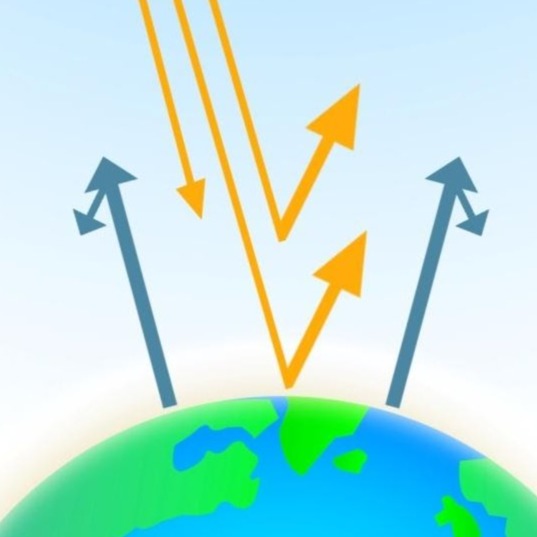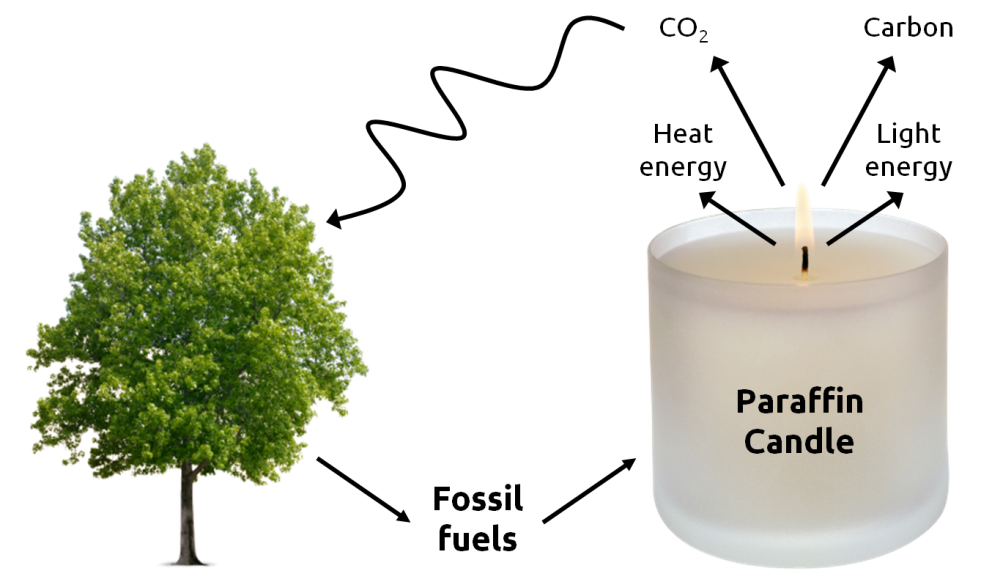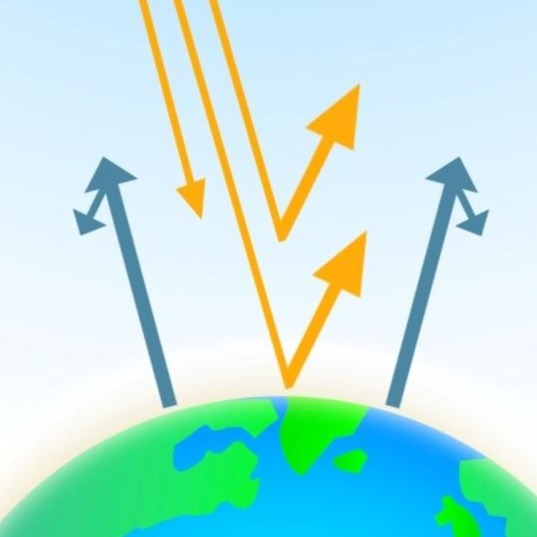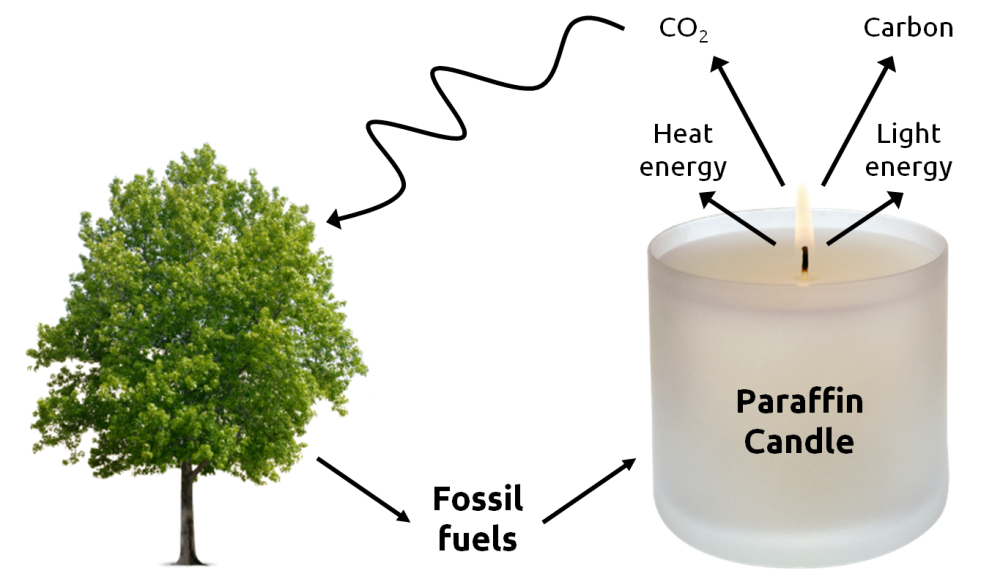Impacts of Climate Change on Business and the Economy Training Online

Impacts of Climate Change on Business and the Economy Training Online
Our world's environment has been changing due to climate change and we all need to play our part before it is too late for the planet. Temperatures are rising, ocean warming and natural disasters are increasing (fires, floods etc.)
This is the first course in a 4 part series. We are offering the first part of this course free of charge in an effort to help educate people on the dangers our planet faces. If you find the course useful we encourage you to move on to the 3 other part of the course available in the series (available on the subscription plan).
In Unit 1, this course, you’ll learn the basics of climate change science and its impacts, so you can better understand it yourself, and effectively communicate the key concepts to others.
LEARNING OUTCOMES:
When you’ve completed this unit, you should be able to:
- Explain what is meant by the “enhanced greenhouse effect” and its indicators for global warming;
- Describe the potential environmental, social, economic and business impacts of climate change – with particular emphasis on the impacts on business and the economy;
- Identify key greenhouse gases, and describe their potential for global warming.
At the end of Unit 1, you’ll have an opportunity to put your carbon management skills into action in a short case study exercise.
Some of the topics covered include:
Climate Change
Climate change is the unseasonal or irregular change to weather patterns caused
by changes to earth’s natural atmospheric, hydrospheric and biospheric cycles. The science of climate change is focused on changes in the Earth’s surface and ocean temperature, low-level gas concentrations, and biological and hydrological feedback cycles.
Layers in the Atmosphere
This graphic illustrates the layers of Earth’s atmosphere. The troposphere is closest to the Earth’s surface, extending up to about 10 km from the Earth’s surface. This is where our weather occurs. The stratosphere goes from about 10 to 45 km above the earth. This is where commercial aircraft fly. The ozone layer is in the stratosphere. The mesosphere extends to about 80 km. Temperatures in the mesosphere are the coldest in the Earth’s atmosphere. Above that is the thermosphere, with steadily rising temperatures as it absorbs x-ray and short-wave ultraviolet radiation. Auroras also occur in the thermosphere. The outermost layer is the exosphere, which eventually thins into outer space.
The Greenhouse Effect
The gases that make up the earth’s atmosphere act as a thin blanket around the earth.
When the short wave energy from the sun reaches the earth’s surface, some of it is converted to heat energy. Most of that heat is re-radiated as long wave energy back toward space. But the gases in the atmosphere re-radiate some of the heat energy back toward the ground, and trap some of the sun’s heat close to the surface. The atmosphere uses this blanket effect to regulate the heat exchange and to maintain a relatively constant surface temperature that can support life. This is known as the greenhouse effect, as it literally acts like a greenhouse for growing plants. The enclosed space inside the greenhouse traps radiation during the day, and keeps the air warm and moist. The greenhouse effect is a good thing – it makes life possible on earth. The gases that re-radiate the sun’s heat are called “greenhouse gases.” Natural emissions of greenhouse gases are normally removed or balanced by other natural processes as shown here. This concept is known as the carbon cycle and revolves around the fact that all life on earth is carbon-based.
Run time about 60 minutes.
SKU:
Course Highlights:
- On-demand Training
- Complete on Any Device
- Quality Focused
- Fast Certification
- Tax Deductable
- 100% Online
- 24 Months Unlimited Course Access
- Self-print Certificate
Couldn't load pickup availability

"Very detailed information, with the ability to shuffle and skip past parts that I knew. I actually enjoyed doing it. I was refreshed after completing the course. All in all, a fantastic refresher course."
Luke W."Straight forward and easy to understand. Thanks, OHS this is my second Refresher course."
Anonymous"Quick & relatively easy, done from the comfort of home."
David B"Really great courses on OHS website, would use this site again."
RhysADDITIONAL EXTRA BONUSES with OHS.com.au
Claim up to $1271.95 worth of Extra Bonuses
with every purchase
- Your personal copy of Safety Legends E-Book (value $39.95)
- $100 off your first case from Naked Wines (value $100)
- Upto 350,000 Bonus AMEX Frequent Flyer points* (value $1000)
- Complimentary Access to two online courses** (value $132)
$1271.95 EXTRA VALUE - JUST FOR YOU INSIDE!
* New customers when you successfully sign up for a new personal / business credit card ** Indigenous Cultural Awareness / Impacts of Climate Change coursesDescription
Our world's environment has been changing due to climate change and we all need to play our part before it is too late for the planet. Temperatures are rising, ocean warming and natural disasters are increasing (fires, floods etc.)
This is the first course in a 4 part series. We are offering the first part of this course free of charge in an effort to help educate people on the dangers our planet faces. If you find the course useful we encourage you to move on to the 3 other part of the course available in the series (available on the subscription plan).
In Unit 1, this course, you’ll learn the basics of climate change science and its impacts, so you can better understand it yourself, and effectively communicate the key concepts to others.
LEARNING OUTCOMES:
When you’ve completed this unit, you should be able to:
- Explain what is meant by the “enhanced greenhouse effect” and its indicators for global warming;
- Describe the potential environmental, social, economic and business impacts of climate change – with particular emphasis on the impacts on business and the economy;
- Identify key greenhouse gases, and describe their potential for global warming.
At the end of Unit 1, you’ll have an opportunity to put your carbon management skills into action in a short case study exercise.
Some of the topics covered include:
Climate Change
Climate change is the unseasonal or irregular change to weather patterns caused
by changes to earth’s natural atmospheric, hydrospheric and biospheric cycles. The science of climate change is focused on changes in the Earth’s surface and ocean temperature, low-level gas concentrations, and biological and hydrological feedback cycles.
Layers in the Atmosphere
This graphic illustrates the layers of Earth’s atmosphere. The troposphere is closest to the Earth’s surface, extending up to about 10 km from the Earth’s surface. This is where our weather occurs. The stratosphere goes from about 10 to 45 km above the earth. This is where commercial aircraft fly. The ozone layer is in the stratosphere. The mesosphere extends to about 80 km. Temperatures in the mesosphere are the coldest in the Earth’s atmosphere. Above that is the thermosphere, with steadily rising temperatures as it absorbs x-ray and short-wave ultraviolet radiation. Auroras also occur in the thermosphere. The outermost layer is the exosphere, which eventually thins into outer space.
The Greenhouse Effect
The gases that make up the earth’s atmosphere act as a thin blanket around the earth.
When the short wave energy from the sun reaches the earth’s surface, some of it is converted to heat energy. Most of that heat is re-radiated as long wave energy back toward space. But the gases in the atmosphere re-radiate some of the heat energy back toward the ground, and trap some of the sun’s heat close to the surface. The atmosphere uses this blanket effect to regulate the heat exchange and to maintain a relatively constant surface temperature that can support life. This is known as the greenhouse effect, as it literally acts like a greenhouse for growing plants. The enclosed space inside the greenhouse traps radiation during the day, and keeps the air warm and moist. The greenhouse effect is a good thing – it makes life possible on earth. The gases that re-radiate the sun’s heat are called “greenhouse gases.” Natural emissions of greenhouse gases are normally removed or balanced by other natural processes as shown here. This concept is known as the carbon cycle and revolves around the fact that all life on earth is carbon-based.
Run time about 60 minutes.
- Money Back Guarantee
- Save Time & Money
- Tax Deductible
- 1000's Trained Each Month
- Quality-Focused
- Peer Reviewed Courses
- Trusted Industry Partner
- Fast Certification
- 60 Day Guarantee
- *See refund policy


Got multiple people needing to do a course? We will get back to you within a day!
Student Reviews

Couldn't load pickup availability

Contact Us!
Contact form
ADDITIONAL EXTRA BONUSES with OHS.com.au
Claim up to $1271.95 worth of Extra Bonuses
with every purchase
- Your personal copy of Safety Legends E-Book (value $39.95)
- $100 off your first case from Naked Wines (value $100)
- Upto 350,000 Bonus AMEX Frequent Flyer points* (value $1000)
- Complimentary Access to two online courses** (value $132)
$1271.95 EXTRA VALUE - JUST FOR YOU INSIDE!
* New customers when you successfully sign up for a new personal / business credit card ** Indigenous Cultural Awareness / Impacts of Climate Change coursesDescription
Our world's environment has been changing due to climate change and we all need to play our part before it is too late for the planet. Temperatures are rising, ocean warming and natural disasters are increasing (fires, floods etc.)
This is the first course in a 4 part series. We are offering the first part of this course free of charge in an effort to help educate people on the dangers our planet faces. If you find the course useful we encourage you to move on to the 3 other part of the course available in the series (available on the subscription plan).
In Unit 1, this course, you’ll learn the basics of climate change science and its impacts, so you can better understand it yourself, and effectively communicate the key concepts to others.
LEARNING OUTCOMES:
When you’ve completed this unit, you should be able to:
- Explain what is meant by the “enhanced greenhouse effect” and its indicators for global warming;
- Describe the potential environmental, social, economic and business impacts of climate change – with particular emphasis on the impacts on business and the economy;
- Identify key greenhouse gases, and describe their potential for global warming.
At the end of Unit 1, you’ll have an opportunity to put your carbon management skills into action in a short case study exercise.
Some of the topics covered include:
Climate Change
Climate change is the unseasonal or irregular change to weather patterns caused
by changes to earth’s natural atmospheric, hydrospheric and biospheric cycles. The science of climate change is focused on changes in the Earth’s surface and ocean temperature, low-level gas concentrations, and biological and hydrological feedback cycles.
Layers in the Atmosphere
This graphic illustrates the layers of Earth’s atmosphere. The troposphere is closest to the Earth’s surface, extending up to about 10 km from the Earth’s surface. This is where our weather occurs. The stratosphere goes from about 10 to 45 km above the earth. This is where commercial aircraft fly. The ozone layer is in the stratosphere. The mesosphere extends to about 80 km. Temperatures in the mesosphere are the coldest in the Earth’s atmosphere. Above that is the thermosphere, with steadily rising temperatures as it absorbs x-ray and short-wave ultraviolet radiation. Auroras also occur in the thermosphere. The outermost layer is the exosphere, which eventually thins into outer space.
The Greenhouse Effect
The gases that make up the earth’s atmosphere act as a thin blanket around the earth.
When the short wave energy from the sun reaches the earth’s surface, some of it is converted to heat energy. Most of that heat is re-radiated as long wave energy back toward space. But the gases in the atmosphere re-radiate some of the heat energy back toward the ground, and trap some of the sun’s heat close to the surface. The atmosphere uses this blanket effect to regulate the heat exchange and to maintain a relatively constant surface temperature that can support life. This is known as the greenhouse effect, as it literally acts like a greenhouse for growing plants. The enclosed space inside the greenhouse traps radiation during the day, and keeps the air warm and moist. The greenhouse effect is a good thing – it makes life possible on earth. The gases that re-radiate the sun’s heat are called “greenhouse gases.” Natural emissions of greenhouse gases are normally removed or balanced by other natural processes as shown here. This concept is known as the carbon cycle and revolves around the fact that all life on earth is carbon-based.
Run time about 60 minutes.
- Money Back Guarantee
- Save Time & Money
- Tax Deductible
- 1000's Trained Each Month
- Quality-Focused
- Peer Reviewed Courses
- Trusted Industry Partner
- Fast Certification
- 60 Day Guarantee
- *See refund policy
Student Reviews

Course Highlights:
- On-demand Training
- Complete on Any Device
- Quality Focused
- Fast Certification
- Tax Deductable
- 100% Online
- 24 Months Unlimited Course Access
- Self-print Certificate
Couldn't load pickup availability

"Very detailed information, with the ability to shuffle and skip past parts that I knew. I actually enjoyed doing it. I was refreshed after completing the course. All in all, a fantastic refresher course."
Luke W."Straight forward and easy to understand. Thanks, OHS this is my second Refresher course."
Anonymous"Quick & relatively easy, done from the comfort of home."
David B"Really great courses on OHS website, would use this site again."
Rhys



Are you from a large organisation? Contact us for a group quote!
 Checkout securely with
Checkout securely with
 1300 307 445
1300 307 445



 Download Course PDF Here
Download Course PDF Here